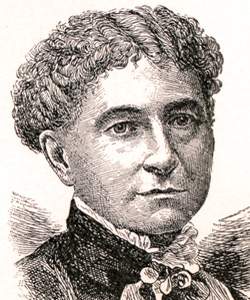Amelia Jenks Bloomer (American National Biography)
Scholarship
Bloomer's early reform interest was confined primarily to the temperance movement, but she had long believed in the equality of women and men, striking the promise to obey from her marriage vows and attending the 1848 women's rights convention in Seneca Falls. Like many women involved in the temperance movement, Bloomer was inspired by new opportunities to express her opinions and to advocate change but was frustrated by the limitations placed on these opportunities by male-dominated temperance groups. Desiring to provide a greater voice for the women's temperance movement, in 1849 she founded the Lily, a monthly journal. In the Lily's first issue, she wrote: "It is woman that speaks through the Lily. It is upon an important subject, too, that she comes before the public to be heard. Intemperance is the great foe to her peace and happiness. . . . Surely she has a right to wield the pen for its suppression. . . . It is this which she proposes to do in the columns of the Lily" (1 Jan. 1849). Bloomer coupled her work on the Lily with her duties as deputy to her husband, who was postmaster of Seneca Falls.
The Lily soon began to include articles on woman suffrage, property rights, education, employment, and dress reform. Bloomer wrote many of the journal's articles, but she also received contributions from other women, including Elizabeth Cady Stanton.
The Lily soon began to include articles on woman suffrage, property rights, education, employment, and dress reform. Bloomer wrote many of the journal's articles, but she also received contributions from other women, including Elizabeth Cady Stanton.
Kathleen Feeney, "Bloomer, Amelia Jenks," American National Biography Online, February 2000, http://www.anb.org/articles/15/15-00071.html.



